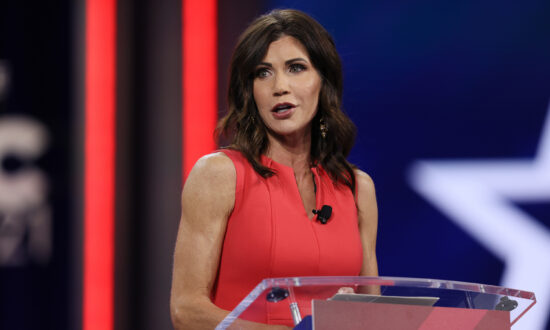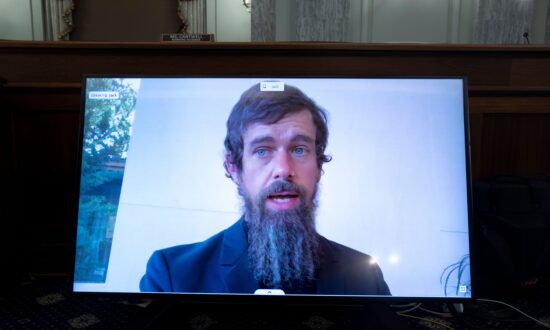Media pretend race was not a factor.
By Nicholas Stix
[Originally published as “Three Race Murders in Seattle” on March 16, 2009, in American Renaissance News, and then re-published in the April, 2009 issue of American Renaissance magazine. I previously posted this here on February 29, 2012.]
I was reminded of this report by someone who mentioned Kris Kime the other day.]
Kristopher Kime, James Paroline, and Edward Scott McMichael had three things in common: They were white, they helped make Seattle a more civilized place, and they were murdered by blacks. Only Kime’s murder was officially recognized as racially motivated, but it is hard not to conclude that the other two men were also killed because they were white.
Edward Scott McMichael
Late last November 2 [2008] or early the next day, Edward Scott McMichael, 53, better known as “Tuba Man,” died of injuries he suffered several days earlier when he was stomped by five Seattle “youths” at a bus stop. Three of the five were arrested but their names were not released because they were only 15 at the time of the attack. McMichael, a lifelong Seattleite, had gained local fame as a busker, a street musician who played the contrabass tuba wherever people gathered for sports and cultural events. The gregarious eccentric could be identified by his tuba, Dr. Seuss or Uncle Sam hat, scraggly beard, horn-rimmed glasses, and by the fact that he often needed a bath. The classically trained McMichael took requests for a price, remembered old customers by name, and played rock songs, movie themes, American pop standards, and classical music.

“Tuba Man”
At about midnight on October 25, five teenagers attacked McMichael and stole his ring and wallet. After they knocked him to the ground he curled up into a ball but they continued to beat and kick him. A passing police officer arrested two attackers on the spot. Police have also caught one of the three who ran away but are still looking for the other two.
On November 12, an estimated 1,500 mourners, mostly sports fans, gathered for a hastily organized memorial service for Tuba Man at Qwest Field Event Center, where Seattle Mariners president Chuck Armstrong tearfully read a tribute written by Mr. Armstrong’s son: “It was just impossible to be sad while he was playing that tuba.” The New York Times even sent a reporter to cover the service.
At the service, someone handed out a flier, pointing out that McMichael’s death was part of “the hidden campaign of murder against white people.” An indignant Todd Dybas, editor of Seattle Sports Online, said this took “a staggering level of insensitivity.” The truth may be staggeringly insensitive, but not as insensitive as beating someone to death.
None of the many prominent news stories and columns I read about the crime gave any description of the attackers still at large or mentioned the race of the two who had been arrested. It took several days for me to find a quote from a message board, and follow it to a copy of the Seattle Police Department’s “morning press release” at a crime blog, which reported: “Unfortunately, the only description that we have is that the suspects were black males in their mid-teens.”
On November 7, an entry for McMichael appeared at Wikipedia, the Internet’s most popular reference (see “Wikipedia on Race,” AR, August 2008). The entry did not mention race, and still does not.
The Seattle Post-Intelligencer published a column on the killing that attracted over 1,000 reader comments. The vast majority of responses were deleted for “insensitivity,” and a number of people whose responses remain were permanently banned after complaints by politically correct posters.
James Paroline
On July 9, 60-year old, Vietnam War veteran James Paroline was killed in his residential Seattle neighborhood of Rainier Beach, as he did his daily duty of watering the garden in a small traffic circle in front of his house. He always put out traffic cones to prevent cars from driving over the hose, which he ran from his house. This meant some cars had to drive the long way around the circle to avoid the cones.
That evening, three black women in their teens and early twenties in two cars refused to drive the long way around. They stopped their car, and started yelling at Paroline. A neighbor shot a video of the confrontation, in which Paroline tries to ignore the girls, while one can be heard claiming they were hosed and beaten by Paroline. One can be seen throwing a jug of water at Paroline. One girl then fetched her sister’s boyfriend, 28-year-old Keith David Brown, who walked up to the older man, spoke quietly to him, and then “sucker-punched” him in the face, according to court documents. The blow knocked Paroline to the pavement, fracturing his skull in several places. Mr. Brown got in his car and drove away. Paroline died that night in the hospital, without ever regaining consciousness.

The next day, a white Seattle television reporter at the crime scene described the killer only as “a man in his twenties.” That same day, the black women admitted to police that they had lied, when they claimed they did not know the man who killed Paroline. Police also found no evidence that Paroline had assaulted them.
Once Seattle police learned Mr. Brown’s name, they publicized his photograph but still could not find him. His mother contacted the NAACP, which arranged for Mr. Brown to give himself up at what it called a “neutral” and “safe” location, a black church known for “social activism.” One week after the killing, the police finally got their man. Mr. Brown had a previous record of nine criminal convictions, including theft, felony drug possession, criminal trespass, and two convictions for felony assault. On one occasion, he head-butted and nearly strangled a woman to death.
His mother said Mr. Brown was wracked with remorse since killing Paroline and had been “praying continuously.” She called him the “sweetest” of her three sons, and said he would have attacked Paroline only to protect the women. She also explained that he had moved in with foster parents when she had had to serve time for bank robbery. Shewanda Coleman, the mother of Mr. Brown’s seven-year-old son, reported that he was “a sweetheart,” who “tries to do everything to help everybody.” Mr. Brown has pleaded innocent.
Wikipedia has no entry for James Paroline.
Kristopher Kime
During Seattle’s 2001 Mardi Gras celebrations, gangs of blacks — male and female — charged into the crowd of predominantly white revelers, beating and robbing isolated whites, hitting them with brass knuckles, skateboards, rocks and bottles, and groping white women (see “Bloody Fat Tuesday,” AR, April 2001). White vandals smashed several cars, but the assaults were overwhelmingly by blacks against whites.
Kristopher Kime, a 20-year-old white man who worked in construction and attended Highline Community College, came to the aid of a lone, petite, white woman on the ground being stomped by blacks. One of them, 18-year-old Jerell Thomas, came up behind him and smashed a bottle on the back of Kime’s head. Kime went down, and the pack stomped him.
Seattle’s Finest were assembled nearby, some on the ground, and some on rooftops, and could see the savagery, but were ordered to stand down because Chief Gil Kerlikowske didn’t want to stir up the rioters. When Kime’s friends telephoned 911 for help, the dispatchers refused to send officers into the riot to rescue him. He died that night in the hospital as his grief-stricken father looked on.
After the murder, two Seattle police officers publicly condemned Chief Kerlikowske for ordering police to stay out of the fighting, and one sent the Kime family the $200 in overtime he had earned that night. He said it was to help pay for the funeral. Seattle police eventually recommended that the Kime murder and other black-on-white attacks be treated as hate crimes, but the King County prosecutor made no hate crime charges.
Seattle police officers publicly condemned Chief Kerlikowske for ordering police to stay out of the fighting.
Black Seattle preachers and community leaders were outraged — not by the racist violence — but because the media had dared to show that the perpetrators were black. Black preachers and the president of the Urban League, James Kelly, met with Mayor Paul Schell to demand that the media stop mentioning the riot’s racial character, calling complaints about black racism a “vilification of African Americans.” Chief Kerlikowske dutifully announced that race had had nothing to do with the race riot, and the media took the same line. Eventually, in a rare show of honesty, Chief Kerlikowske did admit that the attacks were racially motivated.
Jerell Thomas was convicted in 2001 of Kime’s murder and sentenced to 22 years in prison. In 2003, however, the Washington Supreme Court overturned Mr. Thomas’ conviction and those of hundreds of other killers in an arcane and controversial decision that appeared to require that murder convictions require incontrovertible evidence of an intent to kill. Mr. Thomas was then re-charged with manslaughter. In February 2006, he pleaded guilty to second-degree manslaughter and received a sentence of 10 years in prison.
Kris Kime’s family sued the City of Seattle for failing to protect him, and in 2002 received a settlement of $1.75 million, a small scholarship fund set up in Kime’s name, and a plaque in Pioneer Square.
At Wikipedia, the original May 10, 2005 article about the riot clearly described the racial nature of the riots, but it was quickly removed by censors and replaced with a vaguely worded, 39-word stub that mentioned nothing about race. The current version says the riot’s racial character is a matter of dispute.
Media Complicity
In all three of the above cases, the media were in some way complicit with the killers. During the 2001 Mardi Gras riot, the press photographed dozens of mob attackers, all of them black. After publicizing some images—the next day, the Seattle Post-Intelligencer ran a cover picture of a 250-pound black man wearing brass knuckles—the media remembered their duty to downplay black crime. The first images, however, were transmitted around the world via the Internet.
On the day following the murder of James Paroline at his traffic-circle garden, Karen O’Leary, a 24-year veteran of Cox Broadcasting’s KIRO Television, told viewers that “the suspect is a man in his twenties.” The police had, of course, told her the man was black, and she knew by then that she was reporting on a murder.
The black girls who claimed Paroline had attacked them followed the “don’t snitch” policy and falsely claimed to the police that they did not know who he was. The police quickly publicized his name, but the “don’t snitch” mentality ensured that Mr. Brown had a full week in which to think over whether to turn himself in.
In the case of Edward Scott McMichael, the “Tuba Man,” I looked through dozens of news articles and columns without finding a single reference to the race of the killers, even though I was able — after much digging — to find the description the Seattle police had originally given the media: “two 15-year-old black boys.”
 Blacks attack a ponytailed white boy during the Mardi Gras rioting in which Kris Kime was killed
Blacks attack a ponytailed white boy during the Mardi Gras rioting in which Kris Kime was killed
So how do you fight crime in a city in which race must not be mentioned and motives must not be examined? Seattle’s current mayor, Greg Nickels, first won office in 2001 with a promise that never again would a man be beaten to death in Seattle while police looked on. He said that if he were elected, he would hang Kristopher Kime’s death certificate on the wall of the mayor’s office. He kept that promise, but left Police Chief Gil Kerlikowske on the job despite campaign hints that he would fire him for incompetence. His latest crime-fighting proposal? Shortly after “Tuba Man” was killed, he proposed a new city regulation that would make it illegal for a private citizen to carry a gun in any city-owned building or park. This would include citizens who have the legal right to carry concealed weapons.
Most legally armed citizens are white, while a vastly disproportionate number of gun criminals are black. Law-abiding citizens would, of course, be the only ones who would obey this silly law, leaving them defenseless against robbers and murderers. If his proposal goes through, Mayor Nickels had better be prepared to hang more death certificates on the wall of his office.
[From WEJB/NSU’s Seattle files:
“De-Policing in America’s Cities: Erasing the ‘Thin Blue Line’” ;
“Race Hustler Alert at Wikipedia! Someone Has been Making Mischief Regarding Maurice Clemmons’ Lakewood Massacre”;
“Seattle: Diversity Trainers Wage War on Policing”;
“Ex-Cons May Gain Affirmative Action Status in Madhouse Seattle”;
“Seattle's Meanest Streets (Updated!)”;
“Seattle Cop Rails Against Affirmative Action Policing”;
“Seattle: Baby-Faced ‘Tuba Man’ Killer, Billy Chambers, Strikes Again”;
“Stone Killer Billy Chambers, Who Murdered Seattle’s Beloved ‘Tuba Man,’ Edward McMichael, is Undercharged Yet Again in His Newest Alleged Crime”;
“War on Competent, White, Male, King County, WA Prosecutor James Konat Continues Apace: NAACP Demands His Dismissal, and He is Removed from Two Murder Cases”;
“Is It Possible for Blacks to Have a Good Time Without Bloodshed? Seattle Reader Asks if ‘Bite of Seattle’ Festival Could Become Blood of Seattle”;
“A Riot in San Francisco, with More to Come! Cop Shoots Innocent Black Honor Student (from Seattle), Kenneth Wade Harding, 19, in the Back; the Brothers are (as Always) on War Footing”;
“Seattle Blacks Believe That They Can Resist Arrest, and Aid and Abet Those Resisting Arrest with Impunity Against White Policemen…”;
“Billy Chambers, Racist Killer of Seattle’s Beloved ‘Tuba Man,’ Edward McMichael, Pleads Guilty, Gets Minimal Sentence, in Attempted Murder of Witness”;
“One of Tuba Man’s Killers Goes to the Big House, but for a Mere 22 Months for Attempted Murder”;
“For Alleged Reporter Levi Pulkinnen at the Seattle Post-Intelligencer, There are No Black Murderers of Whites, Only ‘Accused’ Ones”;
“AOL/Huffington Post and AP Manage the Black Air Jordan Riots Story”;
“Seattle: Since Blacks Support Black Criminals, City Needs Surveillance Cameras Everywhere”;
“Seattle: Nameless, Faceless, Raceless Suspect Arrested for Murder of Faceless, Raceless Victim in Belltown”;
“Belltown Murder: Still Raceless and Faceless in Seattle”;
“Cause and Effect? Seattle Reader Writes on Military Academy Diversity and Rape, and the Seattle Air Jordan Riots”;
“Seattle’s Good Nazis Watch Racist Black Mob Attack Couple for 4 Minutes, Without So Much as Calling 911; Racist Blacks Perform for Bus Cameras”;
“Seattle: The Raymel J. Curry Story”;
“WA Wants to Solve Crime by ‘Disappearing’ Videos; ‘Security’ Wants to Watch; Violent, Career Felon, Aiesha Stewart-Baker, 15, Wants Ghetto Lottery”;
“Seattle: Blacks Account for 7.7% of Residents, Yet They Seem to Have Taken the Entire City Prisoner”; and
“Seattle Police Have Pushed Down the Crime Rate—Through Discouraging Victims from Reporting Crimes!”]
Postscript, April 30, 2021: I may have drawn a false inference from the last article. Rather than people not reporting crimes because of police intimidation, many of the non-reporters in the “vibrant” Rainier Valley neighborhood in question are likely blacks who support black criminals, even when said criminals victimize them!














